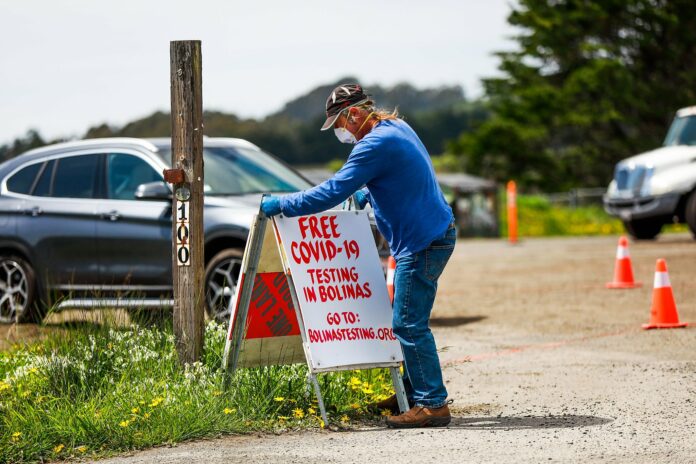Mass coronavirus testing in the Marin County town of Bolinas in April revealed no active COVID-19 infections and little to no previous infections among 1,880 residents and first responders, researchers announced Thursday.
Researchers at UCSF, who analyzed tests taken in April, said the findings show the effectiveness of sheltering in place — made easier by the remote location of the coastal enclave miles from any highway.
“There are very few, if any, people who have been infected in this community, and that’s great news for this community,” said study leader Dr. Bryan Greenhouse, an associate professor in the UCSF Division of HIV, Infectious Disease and Global Medicine and an investigator at the Chan Zuckerberg BioHub. “If there’s another wave and they do the same thing again, they can protect themselves from infection.”
In Bolinas, Greenhouse and his colleagues analyzed 1,880 blood samples collected from residents and first responders using both a commercial COVID-19 antibody test produced by the Abbott biotech company and an in-house version, and combined results from the two tests to statistically estimate population-level infection rates.
The range in results — between 0 and 3 per 1,000 people — accounted for the fact that tests could present false positives, especially among such a low prevalence of cases, Greenhouse said. It’s not yet known whether the presence of antibodies confers immunity to protect from further infection.
Similar mass testing of Bolinas and the Mission District in San Francisco, with both results analyzed by UCSF, reported drastically different results that reveal higher risks depending on how close communities live together and whether they are going to work under shelter-in-place orders.
UCSF reported that diagnostic testing in the Mission District, densely populated with Latinos disproportionately affected by COVID-19, revealed an estimated 2% infection rate among nearly 3,000 people. The infection rate was much higher — around 6% — among essential workers.
UCSF will publish more data at a later date about whether people who participated in the Bolinas study sheltered at home or went to work.
Bolinas residents, led by local venture capitalists Jyri Engeström and Cyrus Harmon, raised $400,000 and organized a grassroots effort to get everyone in the town tested in April. A majority-white community, the town has a median annual income of $56,000, below the U.S. average, with 15 percent of residents living below the poverty level. The UCSF study report said local individuals, businesses and agencies provided additional support during the pandemic — including mask and food distribution, rent subsidies, and phone health checks for high-risk residents — to help everyone stay healthy.
“I think we have been doing a really good job at sheltering in place and being cautious and wearing masks. I’m not surprised with these results,” said Dr. Anna O’Malley with the Coastal Health Alliance in Bolinas. “For me, it just underscores the importance of each of us doing our own work to continue to be cautious and support our immune system.”
O’Malley said West Marin has reported fewer than 10 cases in Bolinas since the end of April. She is watching closely as businesses begin to reopen in town and more tourists arrive.
“I am still hearing and feeling within myself cautiousness in terms of how we re-engage,” O’Malley said.
Mallory Moench is a San Francisco Chronicle staff writer. Email: [email protected]






